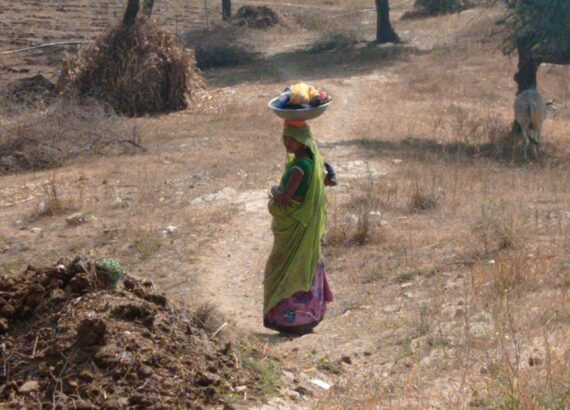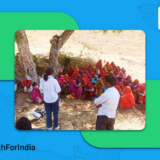
Women’s Labor in Rural India: Participation and Challenges
It was one pleasant sunny morning in Dewas, a quaint beautiful village surrounded by the Aravallis, in the Jhadol tehsil of Udaipur. Some mothers had gathered at one of the two Anganwadi centers, where I had just started spending my time, for their routine ante-natal check-ups. Children were playing in the courtyard of the rented building in which this center has been running for almost a decade. However, what became the most striking and discomfiting part of the entire day were some stories.
Challenges Faced by Young Girls
Stories of two girl children belonging to different families in the hamlet. One, 9, and another, 13. Both of them had never gone to school but used to come to the center with their siblings, holding one in their arms and the other following them. The girl aged 9, as I was told by the Anganwadi worker, has been handling all the household chores and caring for her siblings and her mother who had gone through a tubectomy recently. Similarly, incessantly ‘mothering’ 4 younger siblings had consumed perhaps the most developmental years of the life of the 13-year-old.
Ubiquitous Presence of Women in Labor
Unfortunate but not uncommon! The arduous and tenacious labor of women is a common nerve that runs through different stories of Jhadol. Women are present everywhere whether it is in their homes, fields, markets, and so on. In the face of a lack of employment opportunities, men often migrate to Udaipur, Surat, Ahmedabad, etc. In their absence, women not only take care of the household chores but also actively engage in other work. They work on their small to marginal agricultural lands of which they seldom have legal ownership.

Drudgery and Struggle for Survival
In semi-arid regions like Jhadol, fetching water and fuel becomes a drudgery for women which takes up a significant share of their time. Women leave to fetch fuelwood as early as 7 in the morning, often on empty stomachs, and come back at around 10-11. Geeta Devi's husband who was a manual laborer in Udaipur passed away early this year due to recurrent health problems. She now works as a daily wage worker at a nearby construction site earning ₹250 a day. One can find many such women working at anicuts, roads, and house construction sites.
Also read: Cultivating Resilience: Navigating Cropping Seasons in India
Health and Livelihood Challenges
However, with a ubiquitous presence, another thread weaves almost every woman together. It is the adversity they face about their health, livelihoods, education, and so on. Most of these women complain of fatigue and weakness throughout the day. The drudgery of fetching water and fuel seems never-ending even during pregnancy. In cases where women and children migrate with their families, there is another difficulty in availing Integrated Child Development Services (ICDS) and ration services.
Vulnerability of Women in the Informal Sector
Most of the women who engage in paid work form part of the informal sector. This translates to employment precarity to which women belonging to marginalized Adivasi communities, as is the case with most women in Jhadol, are more vulnerable. There is another issue very pertinent to women in the region. Trafficking of children and young girls across Gujarat is a serious malaise for the communities.


Potential Solutions and Opportunities
Nevertheless, the solutions might lie in between these very intricacies. In one instance, in Dewas village, a 7-hour running Balwadi (child day-care) of Seva Mandir assured mothers to keep working outside their homes without compromising their child’s care and development. Therefore, a strengthened Anganwadi system becomes important for women engaged in paid work. Creating and ensuring sustainable livelihoods in the rural landscape itself might go a long way in easing the problems of women. In Jhadol, there have been instances of harassment by small-time creditors, or ‘companies’ as colloquially called. Therefore, with sustainable incomes, financial and digital literacy among women also becomes crucial.
Also read: Empowering Communities to Reduce School Dropouts in India
Gandhi's Vision and Empowerment
When Gandhi wrote in ‘Harijan’ about his vision of independent India, he stressed on the villages becoming the epicenter of the Indian republic. He envisioned oceanic circles which are composed of innumerable villages with the individual at the center. He emphatically writes, “The outermost circumference will not wield power to crush the inner circle but will give strength to all within and derive its own strength from it…Life will not be a pyramid with the apex sustained by the bottom.” Gandhi’s vision comes as an important reminder to us against the backdrop of women’s monumental role in sustaining rural life vis-a-vis the enormity of everyday challenges and obstacles they face. Let us not keep making women the bottom which sustains the apex of life.


